Best cameras for photos and videos 2025: From beginner to pro models
Want to capture the majesty of the cosmos? We've rounded up the best cameras for photos and videos, in time for May's colorful star display.

Are you looking to get into photography, or trade up from your existing camera? Now's the time to get one of the best cameras for photo and video, especially if you have astrophotography in mind.
This May 17 the Summer Triangle asterism, three stars from three different constellations, shine blue-white in the night sky alongside other other multicolored stars. Then, on May 22, the waning crescent moon shares the skies with Saturn and Nepture. Why not break your new camera in by capturing either or both of these?
But with so many different cameras on the market, where do you start? We have rounded up the best cameras for photo and video, from a range of trusted brands. Our guide includes cameras to suit all budgets and experience levels, so read on and let us help you choose the right camera.
The quick list
Here are our top picks in a 'quick view' layout. For more information about each camera, click 'read more below'.

Best overall
No camera is more versatile, in our opinion. It's best for professional shooters with a big budget, but it is more than capable in all shooting scenarios.

Best autofocus
The successor to the popular A7R IV, this camera does everything the previous model did and more, with class-leading AI-based autofocus and hugely detailed images.

Best for beginners
This small and lightweight camera is a pleasure to shoot with. Travel vloggers will appreciate the excellent eye tracking and autofocus, as well as the lack of a recording limit.

Best hybrid camera
This camera used to sit at the top of our best cameras list thanks to its fast autofocusing, massive 61MP full-frame back-illuminated CMOS sensor and 4K UHD 30p video.

Best budget camera
This lightweight camera is suited to candid street photography thanks to its quick power-up time. It has an appealing retro design, is easy to use and boasts a great sensor for the price.

Best for low light
The Canon EOS R6 Mark II is a gift for shooting in low light conditions. It's well built with superb image stabilization and a host of other user-friendly features and it's capable of producing some truly stunning images.
Load the next 4 products ↴

Best lightweight camera
This small and lightweight APS-C camera certainly packs a punch — it's perfect for traveling and has a ton of features to capture stunning stills and video.

Best DSLR
Despite being an old DSLR, this camera still holds its own. The impeccable weather sealing makes it robust and durable, and it can shoot 45.4MP stills and 4K UHD 30p video.
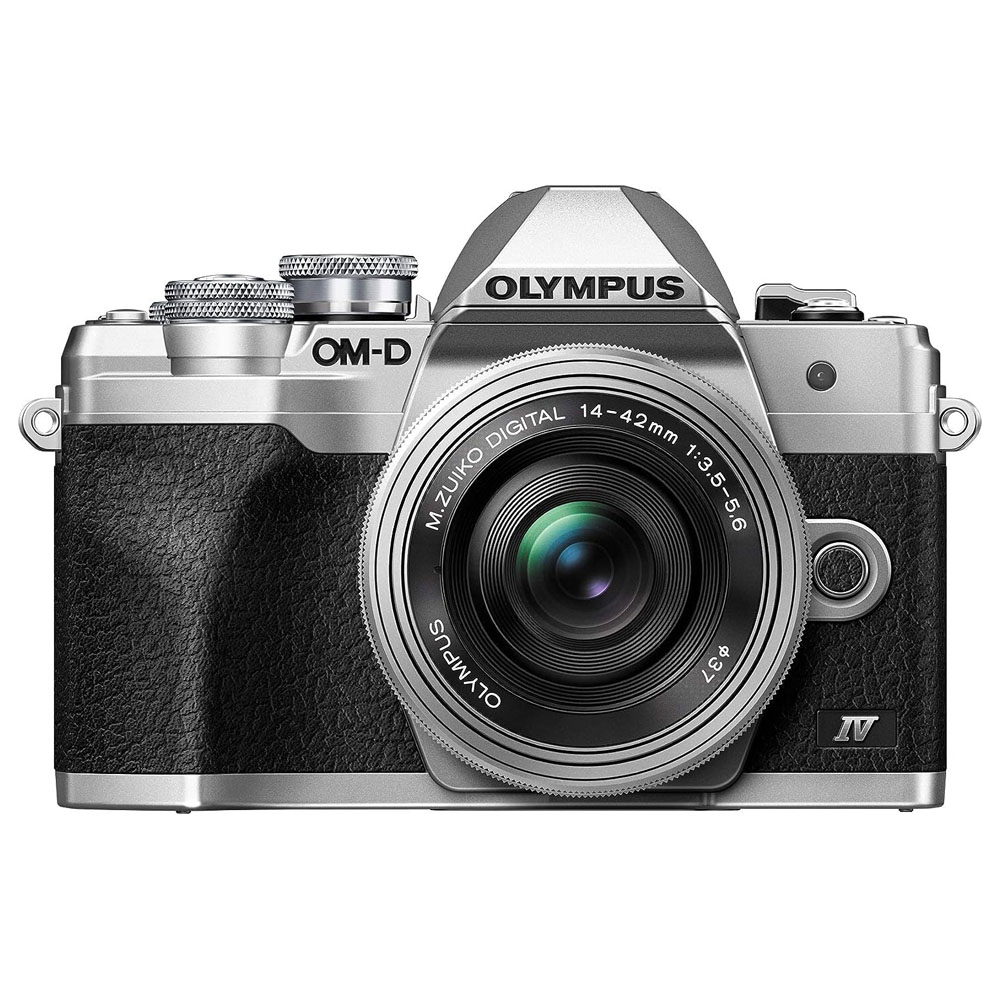
Best Micro Four Thirds camera
This camera weighs less than 1 lb but is still packed with useful functionality. It has a fast autofocus, five stops of in-body stabilization, and an amazing large LCD screen.
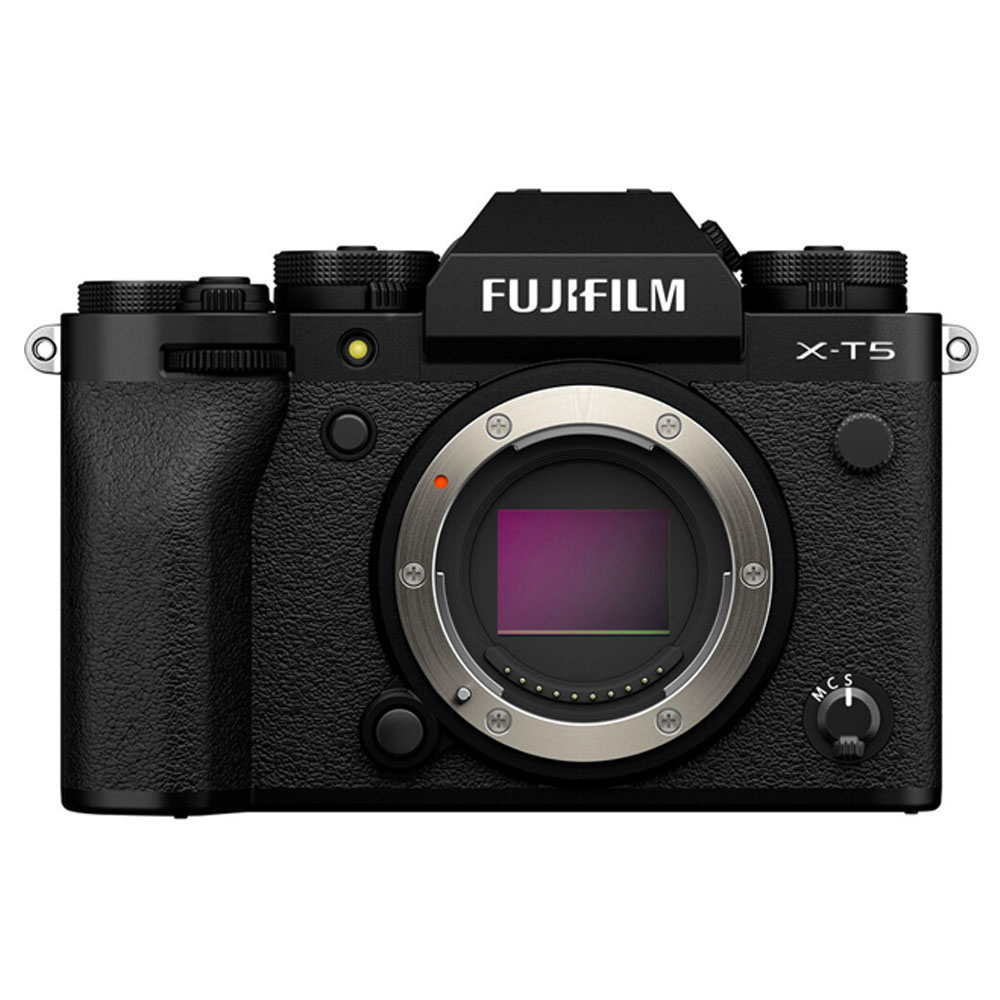
Best all-rounder
The Fujifilm X-T5 is another small-bodied camera and a good all-rounder. It has a classic aesthetic, two SD memory card slots and boasts an impressive low-light performance.
Best cameras we recommend for photos and videos 2025
Why you can trust Space.com
Best overall

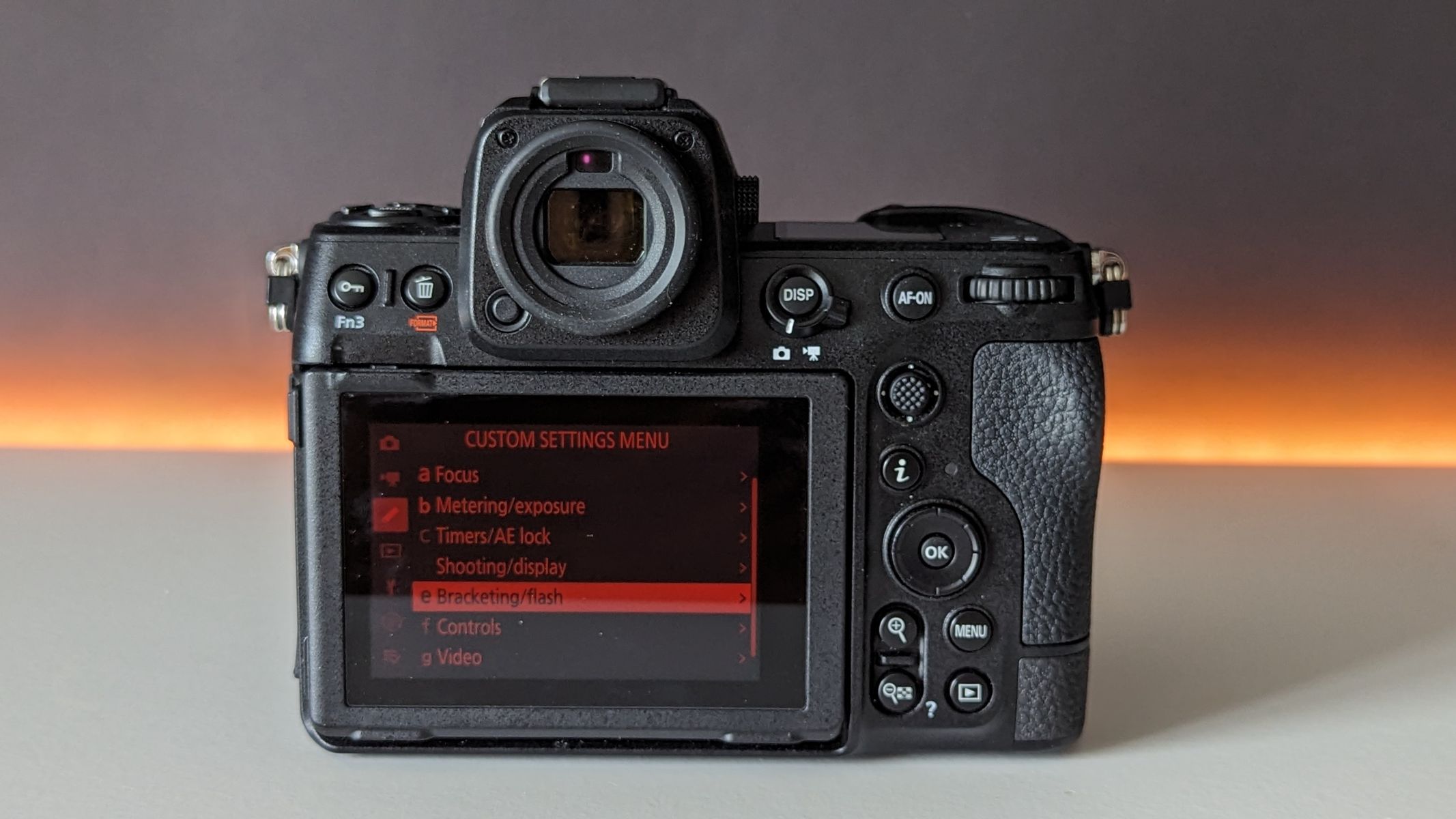






Specifications
✅ You can afford it: This is a big investment, but it'll last for years to come.
✅ You shoot stills and video: This camera is just as impressive at both of these tasks.
❌ You're looking or something lightweight and portable: This model is significantly heavier and bigger than its predecessor. It looks and feels like a professional camera.
🔎 Nikon Z8: Professionals, look no further. If you combined all the best parts of the flagship Nikon Z9 and the best DSLR in the world, the Nikon D850, you'd be left with this heavy-hitter. ★★★★★
If you're beginning your photography journey, you'll likely be put off by the Nikon Z8's astronomical price tag of around $4,000. If you can afford it, however, this is an absolutely incredible camera that we seriously struggle to fault. If you're a professional or a serious enthusiast with a big budget, the Nikon Z8 does everything you could possibly want it to, and it does it incredibly well.
The bottom line of our Nikon Z8 review is that this is the best camera body on the market right now. To give you an idea, we think it combines all the best parts of Nikon's flagship Nikon Z9 and the incredible Nikon D850 DSLR. During our testing, we found that no matter what type of shooting you prefer, this camera is up for the job.
The Nikon Z8 excels at shooting videos and stills, so it's perfect if you want a camera to shoot both. In terms of video, it's able to support numerous high-quality formats such as N-Log, ProRes and RawHQ. For stills, it can shoot at speeds of up to 120FPS — that's so blisteringly fast, it's ideal for capturing fast-moving subjects like sporting events.
This camera is also a powerhouse in low-light conditions, making it a great choice for astrophotography. We love its night vision mode which, when activated, dims the rear screen and uses only red pixels, helping users to maintain their night vision. It's a very nifty feature that we wish more cameras offered.
The only thing we could think of faulting the Nikon Z8 on is its size. It's a bit bulky and heavy, so if you're looking for something compact and easy to carry, this might not be the best choice. However, considering its impressive power and great features, we think the trade-off is definitely worth it.
- Read our full Nikon Z8 review
Attributes | Notes |
|---|---|
Design | Outstanding build quality, but it's big and heavy. |
Performance | Starlight mode enables autofocus detection down to an unheard of -9EV. |
Functionality | Night vision mode for astrophotographers. |
Best autofocus
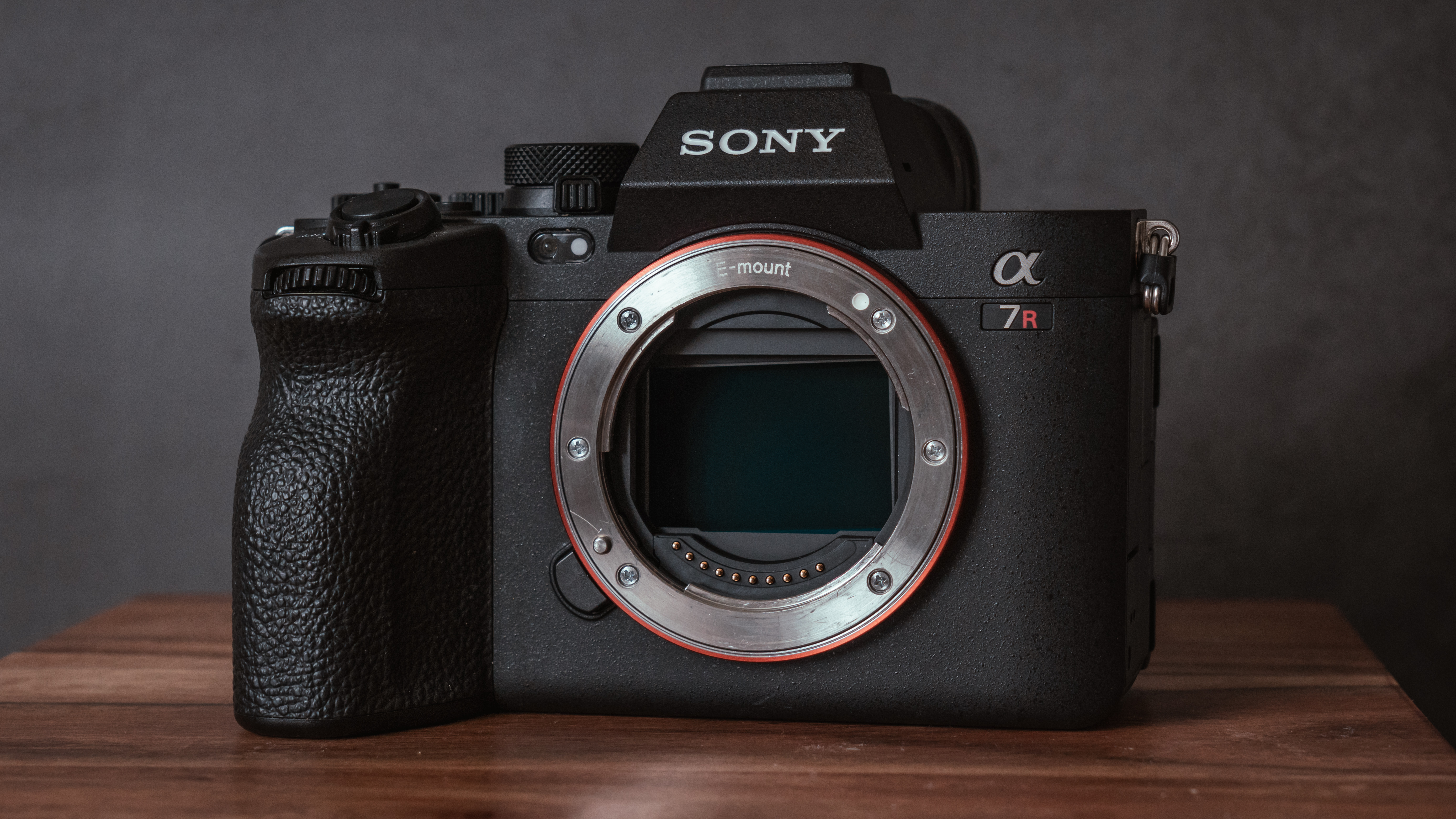




Specifications
Reasons to buy
Reasons to avoid
✅ You shoot portraits or weddings: The new AI-based autofocus system makes shooting people easier than ever.
✅ You shoot multiple styles: This camera excels at most photographic styles and video, so if want a versatile camera, this could be the one for you.
❌ You mainly shoot astro: We found that due to so many megapixels, the images were very noisy at high ISOs. It's fine for the occasional astro shoots with AI denoise in post-processing, but there are better options for this medium.
🔎 Sony A7R V: The Sony A7R V builds on the power of its predecessor with its higher resolution EVF and LCD screen, more stops of image stabilization and a new AI autofocus unit, but the 61MP sensor provides too much noise for astrophotography. ★★★★½
We think the Sony A7R V is one of the best all-rounder cameras on the market. Its huge 61MP sensor is practically unrivalled and captures incredible detail in every shot. But it's not just stills it excels at; it's also capable of shooting video in 8K.
The A7R V is bolstered by an industry-leading and powerful AI-powered autofocus system known as Real Time Recognition, which really sets it apart from the competition. It uses deep learning to distinguish between a range of subjects like vehicles, animals, people and insects; if you're shooting people, it can even distinguish between body parts, recognizing a neck from a nose and an eye from an elbow. In our Sony A7R V review, we found it makes focusing an absolute dream.
In terms of performance, we found the color depth and dynamic range to be impressive, even when shooting in sunny conditions with sharp shadows. It also has an incredible eight stops of image stabilization, making it one of the best cameras for low-light shooting; it enabled us to shoot cityscapes handheld under street lighting at night. It's a great all-rounder of a camera, which we found capable of handling most things we threw at it. However, it does suffer from a bit of image noise when taking the ISO above 6400, so it may not be the best choice for those who specialise in astrophotography.
We also love the camera's 4-axis, multi-angle 3.2-inch LCD screen, with a 63% higher resolution than the tilt-only screen of its predecessor, the A7R IV. We found the screen extremely versatile, able to handle most angles you want to shoot at without the need to crane your neck. You can flip it outwards and spin it around to shoot vlogs or selfies, or tilt it down and out to bring the screen away from the ports when you're connecting microphones or monitors.
- Read our full Sony A7R V review
Attributes | Notes |
|---|---|
Design | Most versatile LCD screen yet. |
Performance | Sony's autofocus just keeps getting better thanks to the new AI system. |
Functionality | Eight stops image stabilization proves great for low light. |
Best for beginners



Specifications
Reasons to buy
Reasons to avoid
✅ You're a casual vlogger: The screen fully articulates, which is great for vlogging and selfies.
✅ You want to produce razor-sharp images: This camera's performance is incredible, even in low light.
❌ You are a filmmaker: There have been problems with overheating when recording lots of video.
❌ You want lots of lenses: The range of APS-C lenses (RF-S) is very limited. You can use full-frame RF lenses but you'll have to be mindful of the 1.6x crop factor, which isn't good for astro.
🔎 Canon EOS R7: A powerful crop sensor camera that can get near full-frame results and can handle almost anything you throw at it with ease. We love it. ★★★★½
The EOS R7 can rival most full-frame cameras despite having a crop sensor. It's more compact and more affordable, but it's surprisingly powerful and an utter joy to use. While professionals will likely be put off by its APS-C sensor, it's a fantastic choice for photography beginners, offering them a great set of tools to master the medium with.
The camera is small and lightweight, which makes it comfortable to hold and ideal for traveling, although it might feel a little too small for those with larger hands given that it is not compatible with a battery grip. It comes with a fully articulated screen which is great for vlogging or shooting selfies and also makes it easy to shoot low to the ground or at unusual angles without having to contort yourself to check your composition.
The R7 has seven stops of in-body image stabilization (IBIS), an unusual but very welcome feature for a crop sensor camera. The IBIS means you can achieve sharper, steadier images in low light and at longer exposures, even when you're holding the camera in your hand, which is great if you find yourself without a tripod.
In our Canon EOS R7 review, we were impressed with the 32.5MP sensor, which creates sharp images and pleasing colors, with very little noise even at ISOs of around 6000. Considering its price point, we were very impressed by the autofocus on this camera, as well as the eye tracking on both human and animal subjects. It also produces crisp, clear 4K video, with the autofocus and eye tracking working well on video, too.
This camera has other neat features like dual SD card slots (again, something you rarely see in a crop-sensor camera), which allow you to either back up your shots or save them across two different memory cards.
One of the only downsides to this camera is the limited options of APS-C lenses (RF-S) currently available. Since Canon is producing such high-quality crop sensor cameras like this one, we hope It will expand its range of compatible lenses soon.
If you're looking for a lightweight Canon that's also full-frame, take a look at our Canon EOS R8 review.
- Read our full Canon EOS R7 review
Attributes | Notes |
|---|---|
Design | Small and lightweight for travel. |
Performance | Impressive tracking. |
Functionality | Up to 30FPS — provided you have a fast card. |
Best hybrid camera

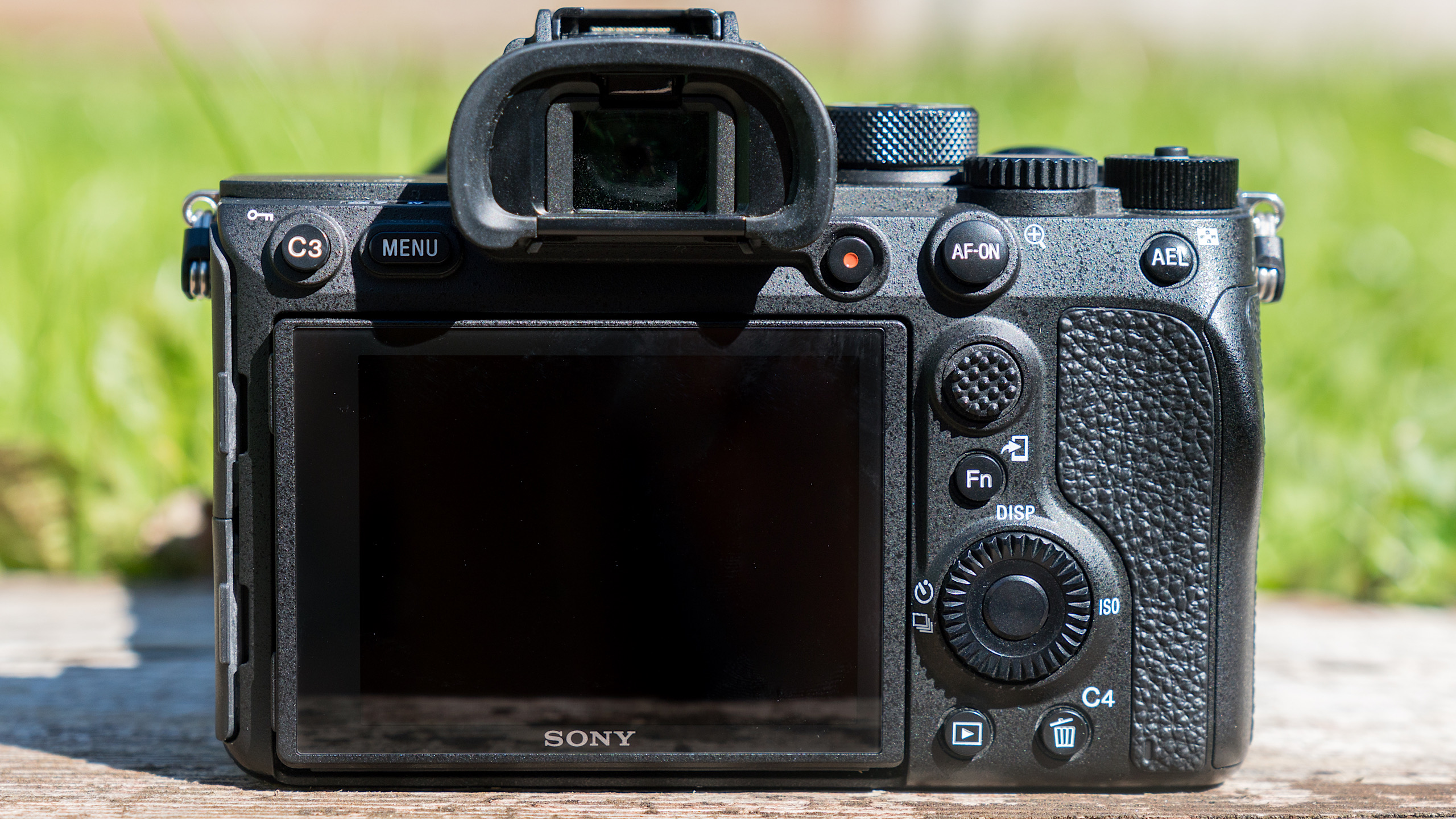
Specifications
Reasons to buy
Reasons to avoid
✅ You shoot lots of portraits, weddings or studio work: The autofocus is incredible, and it has many customizable buttons to get your setup just right.
✅ You're into astrophotography: This camera is a perfect match for astrophotographers of any skill level. You can use the shots right out of the camera up to ISO 6400 before you start to see any noise.
❌ You're not spending much time on photography: Many won't need this level of detail (or file size) and can save money on lower-resolution cameras.
❌ You want to shoot fast action sports: There are other cameras with higher burst speeds.
🔎 Sony A7R IV: Despite the high price tag, this is a camera in a class of its own. For landscape, studio, or professional wedding photographers, this is a fantastic choice. ★★★★½
While the Sony A7R V may have stolen the limelight from the A7R IV, this is still an excellent camera. As long as this camera is still available, it's going to impress whoever picks it up.
In our Sony A7R IV review, we gushed about its huge 61-megapixel sensor which is great at picking up small, intricate details. It handles low light conditions extremely well, which is why we think it's a great choice for astrophotographers, and it even earned a place in our best cameras for low-light photography guide.
Compared to its predecessor, the Sony A7R III, it has more prominent and tactile button, greatly enhancing its usability and ergonomics. This will be particularly appreciated if you shoot outdoors wearing gloves, or in low light environments.
Despite being a generation old now, the Sony A7R IV is still an excellent camera and, as such, it still carries a hefty price tag. Even though the A7R V is now on the market, the A7R IV will remain relevant for a long while — and we think very few cameras are able to handle shooting weddings, portraits, studio work, and landscapes quite like it.
If you're after a lens to accompany it, we used the Sony A7R IV when we reviewed the Sony FE 14mm f/1.8 GM, and we think this camera and lens pairing is a match made in heaven.
- Read our full Sony A7R IV review
Attributes | Notes |
|---|---|
Design | Superb build quality. |
Performance | Bright, sharp and colorful images. |
Functionality | High megapixel sensor means more image noise. |
Best budget camera


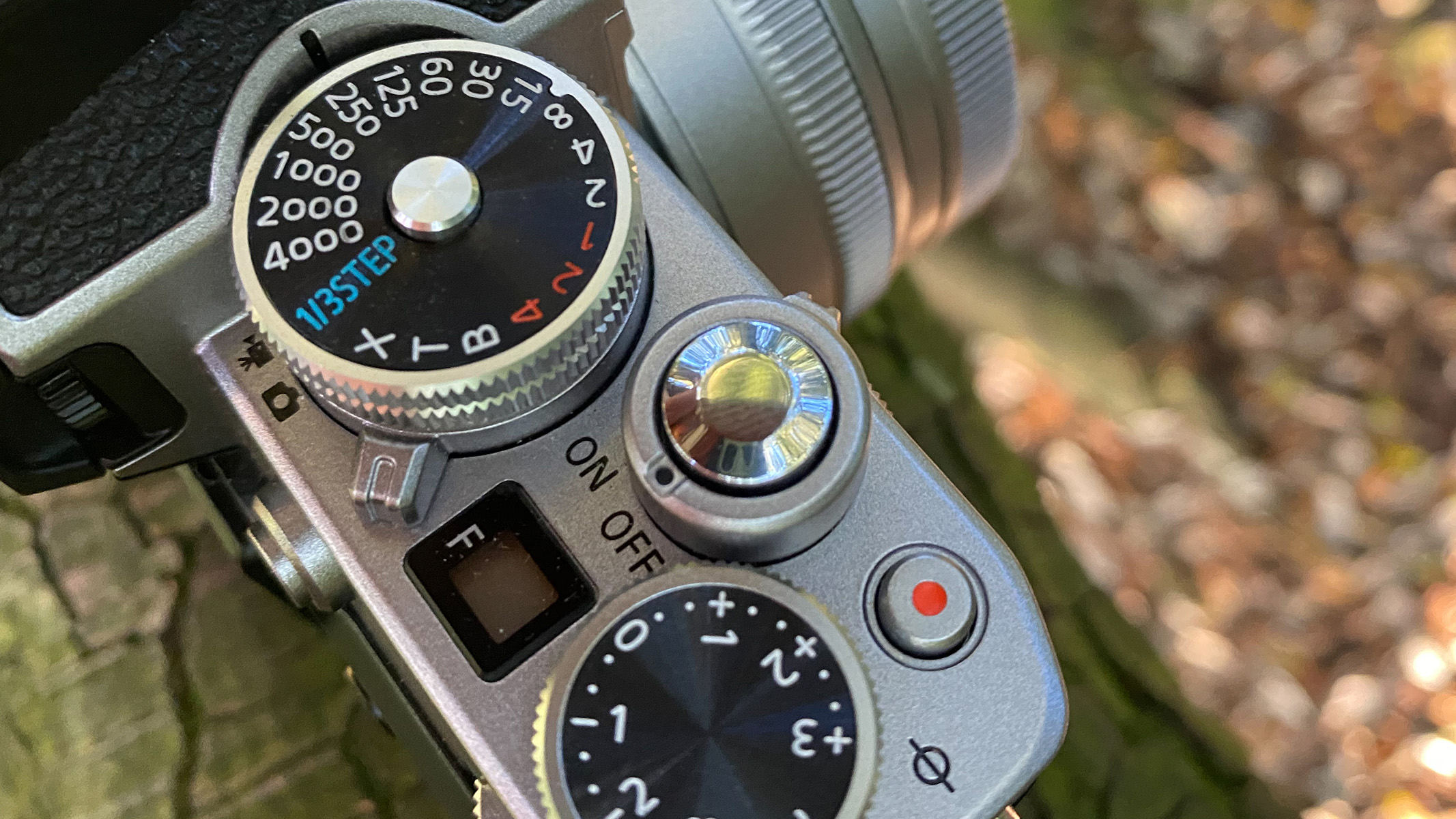


Specifications
Reasons to buy
Reasons to avoid
✅ You want something stylish: The classic aesthetic of this camera is timeless.
✅ You're a beginner: This camera is easy to get to grips with, even for total beginners, and it's reasonably priced.
❌ You're a professional: The 'c' in the name signifies this camera was designed with casual shooters in mind. Pros will find it limiting.
🔎 Nikon Z fc: The Nikon Z fc is an impressive bit of kit, a gorgeous camera to look at and use. On the inside, it's capable and easy to get to grips with for more casual users. ★★★★½
Yes, this is yet another Nikon entry in our list of best cameras for photos and videos, but before you say anything, the Nikon Z fc has earned its place with gusto. This camera also topped our best beginner cameras guide, and for good reason.
It's a gorgeous, timeless-looking camera that is a joy to use. It's well-suited to casual users (which is what the 'c' in its name signifies) thanks to its straightforward and user-friendly approach to camera controls.
The autofocus is designed to prioritize people, maintaining pin-sharp focus on their faces. This feature is ideal for shooting candid street photos, portraits or important events like weddings, where capturing fleeting moments is crucial. The quick and responsive touchscreen ensures you won't miss any spontaneous shots, and the camera is fast overall, ready to go in less than a second after turning it on.
We do think Nikon could do with improving the continuous shooting option mode, so if you're a professional looking to shoot sports or action, you may want to choose a different model. However, for other types of photography, the noise reduction performance is outstanding. Even in low-light situations, you can raise the ISO and still capture remarkable photos. We tested this in our hands-on Nikon Z fc review and could push the ISO to ISO 12,800 and still achieve acceptable images with minimal unwanted noise, which we were very impressed by.
- Read our full Nikon Z fc review
Attributes | Notes |
|---|---|
Design | Retro styling is incorporated tastefully. |
Performance | Noise control works superbly. |
Functionality | Lens options suit a range of content creators. |
Best for low light





Specifications
Reasons to buy
Reasons to avoid
✅ You want a powerful camera for less: This offers great performance at a seriously attractive price.
✅ You're into astrophotography: The R6 Mark II has superb ISO handling, a boon for low-light work.
❌ You want a higher resolution: As excellent as its image quality is, the R5 offers higher resolution.
❌ You're on a limited budget: While cheaper than the R5, there are even cheaper R cameras available.
🔎 Canon EOS R6 Mark II: An absolutely fantastic camera, especially for low-light work. It's packed with features at a seriously attractive price. ★★★★★
In our Canon EOS R6 Mark II review, we called it one of the best Canon cameras available for astrophotography, and we stand by that. It may not have the R5's 45MP resolution, but the R6 Mark II still allows you to capture some truly stunning images, even at night.
Its noise handling up to ISO 3200 is extremely clean with impressive results up to 25,600. It's a step up from the R6, too offering faster shooting (up to 40fps) and enhanced video (4K60 10-bit).
In terms of functionality, it's equipped with a host of user-friendly features, allowing you to tweak virtually every aspect of a shoot. Using the mechanical shutter you can shoot in 12 FPS in full-resolution Raw and up to 40 FPS with the electronic shutter.
It can capture action scenes like sports and concerts thanks to its fast autofocus, which includes includes subject detection of humans, animals or vehicles
Not only does the Canon EOS R6 Mark II excel at capturing the night sky, it's a superb all round camera, powerful and affordable with it.
- Read our full Canon EOS R6 Mark II review
Attributes | Notes |
|---|---|
Design | Compact and lightweight, dust and moisture-sealed |
Performance | Solid resolution and image quality. |
Functionality | Impressive battery life. |
Best lightweight camera


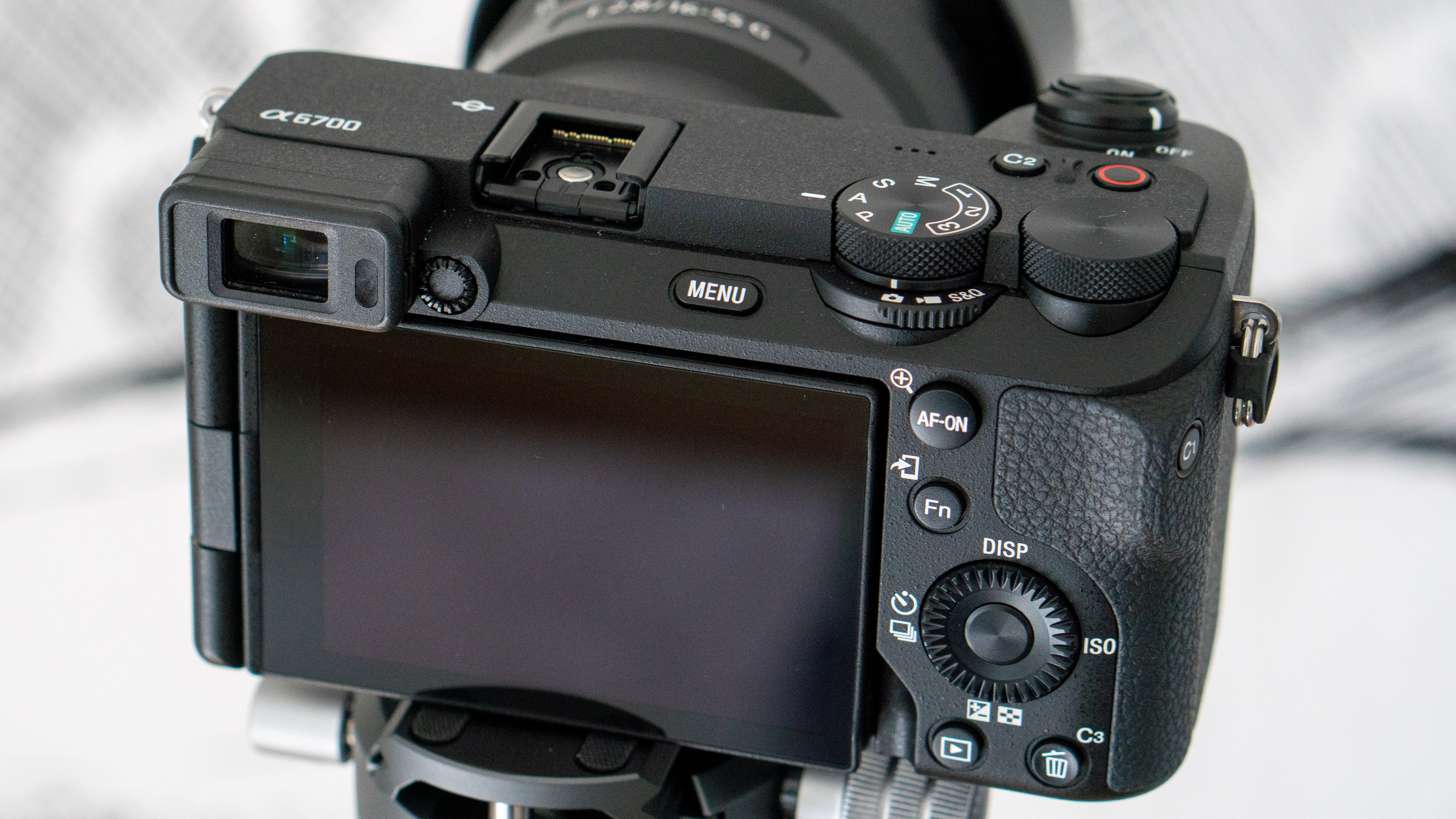




Specifications
Reasons to buy
Reasons to avoid
✅ You're an enthusiast: We wouldn't recommend this as a main camera for pros, but amateur photographers will love it.
✅ You're a vlogger: The fully articulating touchscreen is great for vloggers, and it's small and lightweight — perfect for travel.
❌ You're a pro: While it would be great as a second camera, it's not powerful enough as a main camera if you're a professional.
🔎 Sony A6700: Packed with advanced features and cutting-edge technology, the Sony A6700 is perfect for amateurs or as a second camera for pros. It's the closest thing to a full-frame camera in a crop sensor body. ★★★★
The flagship model of Sony's crop-sensor A range, the A6700 packs in some technology that sets it apart from the competition. With a compact and lightweight body, and weather sealing that means it's protected from the elements, it's a perfect camera for slipping in a bag while you're out and about.
It's more than just a casual shooting camera, however. Despite being an APS-C camera, the A6700 has some advanced features like a fully articulated screen, in-body image stabilization, and up to 4K video shooting. It's a big step up from its predecessor, the A6600, offering much-improved autofocus, refreshed dials, and a better screen.
One of the standout features of this camera is its new AI-based autofocus system which covers seven different focus areas — human, animal/bird, insect, car/train and airplane. Within that, you also have access to a ton of customization options. In our Sony A6700 review, while we noticed a few teething problems with the new system, such as multiple faces in the field of view, we found the AI enables it to track subjects much more effectively than any previous models.
We found this camera to be fine for the occasional astro shot, but the noise starts to become noticeable at ISOs exceeding 5000, so it's not the best choice as your primary astro camera.
Where this camera really excels though is video. The 5-axis in-body image stabilization now works on video as well as still images, and it also boasts an electronic stabilization system for when the camera is moving, known as Active SteadyShot. You can shoot video in 4K at up to 60p at 1.04x sensor crop and 120p at 1.58x sensor crop. This, alongside the fully articulated screen, makes it an ideal pick for vloggers and videographers.
- Read our full Sony A6700 review
Attributes | Notes |
|---|---|
Design | Fully articulating touchscreen. |
Performance | Impressive AI-powered autofocus. |
Functionality | Image stabilization is unusual in an APS-C camera. |
Best DSLR


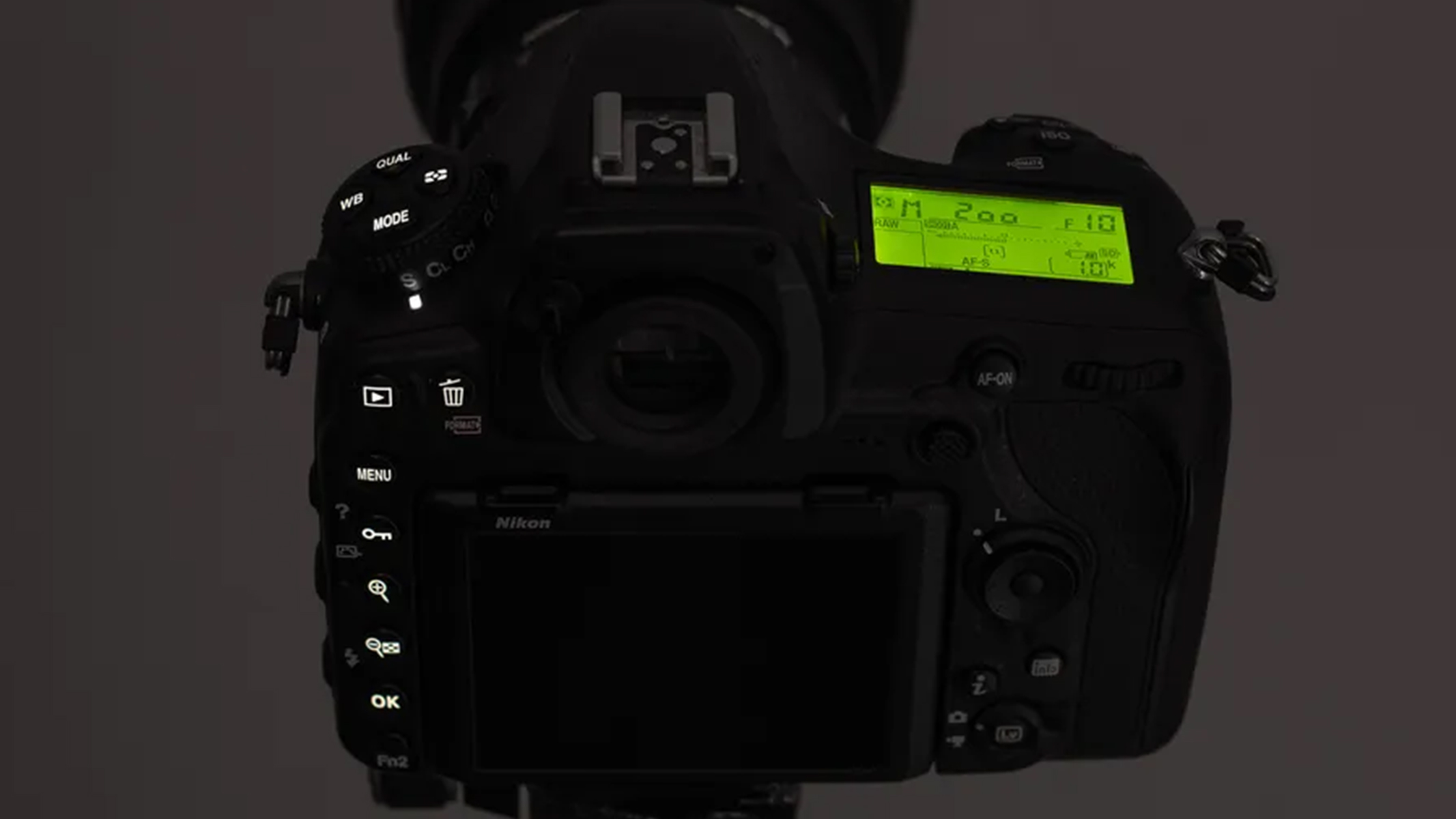


Specifications
Reasons to buy
Reasons to avoid
✅ You shoot astro: Despite its age, this is one of the best cameras for astrophotography.
✅ You often shoot in very cold temperatures: The D850 is weather-sealed and made from magnesium alloy. The manual states it can shoot between 0°C to 40°C (+32°F to 104°F).
❌ You are looking for something light and portable: If this is one of your key criteria, opt for an inherently lighter mirrorless camera.
❌ You want the latest tech: This camera is now over five years old, and most companies are phasing them out to focus on their mirrorless products.
🔎 Nikon D850: With its 45.4MP monster sensor, the Nikon D850 will capture every single star you can possibly see and then some thanks to its wide ISO range. ★★★★½
Mirrorless cameras may be the dameras of the future, but DSLR isn't dead yet, as proven by the Nikon D850. If you need a camera that can do anything, we can't recommend this enough. Despite being over five years old, it can compete with just about anything on the market. In fact, we like this camera so much that we've also featured it in our best cameras for astrophotography, best Nikon cameras for 2022 and best DSLR camera guides.
As we noted in our Nikon D850 review, this camera is excellent at just about anything you throw at it. It's a great choice no matter what type of shooting you want to do, even if it is a little slower (and a bit bulkier) than some of its mirrorless counterparts. There's one major positive to opting for a DSLR, however: there's a huge, huge range of F-mount lenses available that you can use without needing to mess around with adapters. It'll be years until mirrorless counterparts have anywhere near as many natively compatible lenses.
If you prefer the traditional photography experience, this camera features a spacious optical viewfinder that provides a real-time view of your scene. For video recording, it offers an impressive 4K UHD resolution at 30FPS, and you can create slow-motion videos in 1080p resolution at 120FPS, allowing you to capture and slow down fast-paced action with a stunning cinematic effect.
This camera is geared towards professionals and as such comes with a hefty price tag, but we think it's worth every penny. Its rugged, weather-sealed build can withstand harsh conditions without compromising on performance. The backlit buttons are also a nice touch, eliminating the need for a headtorch when shooting astrophotography.
- Read our full Nikon D850 review
Attributes | Notes |
|---|---|
Design | Back-illuminated buttons for astro. |
Performance | Wide-ranging ISO sensitivity. |
Functionality | Lots of easy to access buttons and switches. |
Best Micro Four Thirds





Specifications
Reasons to buy
Reasons to avoid
✅ You're a travel photographer: This camera weighs less than 1 lb but is not lacking in functionality.
✅ You're 'upgrading' from a smartphone: You can pick up this camera and get shooting straight away. The controls are intuitive, and the large LCD screen will feel familiar.
❌ You're a vlogger or keen videographer: Though this camera is more than capable of shooting stunning 4K videos, it doesn't have a mic port.
🔎 Olympus OM-D E-M10 Mark IV: A small, lightweight camera that offers a great balance between usability, quality and a beginner-friendly interface. ★★★★
For those looking to upgrade from a bridge camera or their smartphone for the first time, the Olympus OM-D E-M10 Mark IV feels like a natural evolution. We wouldn't only recommend it to beginners though, as while it's designed with beginners in mind, it's also a very capable camera.
Unlike other smaller cameras that can be difficult and fiddly to handle, this one feels nice and sturdy, and the ergonomic design of the right-hand grip makes it comfortable to use with one hand.
Despite its pocket-sized design, this camera is not lacking in features. The surprisingly large LCD screen is boasts over 1 million dots, giving it excellent clarity and resolution.
If you're new to photography, you can get amazing results by sticking with the 'auto' mode on the M10 Mark IV. That said, once you get to adjusting its manual dials, you'll realize just how capable this tiny camera can be. The menus and settings are very easy to get to grips with, so you'll be shooting like a pro in no time.
After putting it through its paces in our hands-on Olympus OM-D E- M10 Mark IV review, we can happily recommend it as an excellent everyday-use camera. With a beginner-friendly interface and 16 in-camera filters, including HDR, Gentle Sepia and Instant Film, we think it offers the ideal balance of convenience, quality and style.
- Read our full Olympus OM-D E-M10 Mark IV review
Attributes | Notes |
|---|---|
Design | Lightweight design aids portability. |
Performance | 5-axis image stabilization is a welcome addition for vloggers. |
Functionality | A variety of modes bring depth to a beginner-friendly camera. |
Best all-rounder





Specifications
Reasons to buy
Reasons to avoid
✅ You're looking for a good all-rounder to travel with: The 40 MP sensor and high-speed processor is neatly packed into a compact and lightweight body.
❌ You want a fully articulating screen: This one tilts but doesn't flip, so avoid this if you plan on taking selfies or vlogging.
🔎 Fujifilm X-T5: With a 40-megapixel sensor and high-speed processor, the X-T5 packs a lot into a compact body, although the traditional handling and APS-C sensor isn’t ideal for night sky photography. ★★★★
If you're after a user-friendly camera that will suit a range of photography styles, the Fujifilm X-T5 is a good contender. It has a compact and lightweight build that makes it perfect for every day use or even for travelling. Despite its small size, it boasts an impressive seven stops of in-body image stabilization (IBIS) — a feature we're used to finding in much more expensive cameras.
While it packs plenty of modern tech, the X-T5 sports a retro aesthetic that we're big fans of. The three dials on top of the camera make it look like an older SLR. We'll admit they do take some getting used to, but you'll likely find them easier to use than navigating menus on a screen once you've adjusted.
In our Fujifilm X-T5 review, we praised its fast processor, which is perfect for capturing fast movement so you can capture every moment at sporting events or concerts. The IBIS also contributes to this, ensuring your shots stay steady even in low-light settings. These features also mean this is camera is a fantastic option if you're into astrophotography.
Something the X-T5 excels at is timelapse photography and shooting video. If you are interesting in these styles but don't find the X-T5 to your liking, check out our list of the best cameras for timelapse videos.
- Read our full Fujifilm X-T5 review
Attributes | Notes |
|---|---|
Design | Control dials for ISO, shutter speed, exposure compensation. |
Performance | Image stabilization is good in low light. |
Functionality | Battery life is noticeably impressive. |
Best cameras for photos and videos 2025: Frequently Asked Questions
What is the best camera I can buy?
We think the Nikon Z8 is the best camera on the market right now. Based on our extensive testing, we've awarded it a score of five out of five stars. We struggled to find reasons to fault it — professionals need look no further, if their budget stretches that far.
The Sony A7R V, which we rated four and a half out of five stars, comes next on our list thanks to its outstanding image quality and excellent features.
How to choose the best camera for photos and videos?
The size and detail of a camera's image sensor will always be paramount when looking for the best camera. Full-frame cameras generally perform better than crop-sensor APS-C counterparts or Micro Four Thirds cameras because they can provide a wider dynamic range and lower image noise, which is especially useful when shooting in low light.
It's also important to consider lens availability when buying into a camera system. The main brands listed here like Nikon, Canon, Sony and Olympus all have a wide range of camera lenses, complemented by third-party lens manufacturers like Sigma, Tamron and more.
If you're looking for a lens to pair up with your camera, we've also tested and ranked the best lenses for astrophotography and best zoom lenses. Each comes with different maximum apertures, altering the camera's settings while shooting to maintain good exposures, so be sure to pick the lens that's right for what you prefer to shoot. If in doubt, get the widest maximum aperture you can but bear in mind that will come at a higher cost.
What camera type is best for photography?
The Nikon Z8 is the best type of camera for stills photography, according to our in-depth reviews of the most popular cameras on the market. However, the best camera for you depends on your photography style, ability, and budget.
Astrophotographers will need to seek out full-frame cameras that handle high ISO noise well to produce clean shots of the night sky. Portrait and wedding photographers, on the other hand, may need a camera with an electronic shutter to remain quiet when shooting intimate moments. Wildlife, sports and action photographers will need a camera with a high frame burst speed to capture fast-moving subjects.
In this guide, we've picked our top choices for every purpose. We also have other helpful pages, such as the best cameras for beginners, the best mirrorless cameras and best DSLR cameras and the best cameras for low light for those that love golden hour and the blue moment.
Last but not least, we've rounded up the best camera phones and best cameras for timelapse as well.
What are the top five cameras?
The Nikon Z8, Sony A7R V, Sony A7R IV, Nikon Z fc and Canon EOS R7 are the top five cameras in the world right now. After testing each model, we've given them four and a half stars out of five each, going up to five stars for the Nikon Z8, which tops our list.
These cameras all create detailed stills and videos, keeping up with professional photographers and delivering outstanding functionality.
What cameras do professionals use?
This depends on the type of photography they shoot; many professionals shoot with a few different camera brands and models. Nikon, Canon and Sony are the most common brands, but manufacturers such as Panasonic, Leica, Hasselblad, Olympus and more are favoured by some.
What types of cameras are there?
There are two main types of cameras on the market when you move on from camera phones: DSLR and mirrorless cameras. It's worth noting that many DSLR models are being discontinued by manufacturers as they refocus their efforts on newer mirrorless models.
On DSLRs, the view through the viewfinder is piped up the lens by a mirror and prism arrangement. On a mirrorless camera, on the other hand, the viewfinder is electronic, and a live feed from the sensor is displayed on a small screen. Mirrorless cameras are newer and tend to be smaller and lighter than their older DSLR counterparts. You can read more in our guide to DSLR vs mirrorless cameras.
What camera features do I need?
Features like in-body image stabilization, fast burst shooting speeds, 4K or 8K video capture and an interchangeable lens format will suit most photography styles and shooting conditions.
Connectivity also helps share and upload your photos to your laptop or mobile device, so look for cameras with Bluetooth and Wi-Fi synchronization (and the appropriate app or computer software to accompany it). If fast file transfer is important to you, check for wired connections such as USB-C or ethernet ports.
Do I need to buy a tripod?
While it's not compulsory, in many cases the best tripods will help you take sharper, clearer photos by steadying the camera during exposure. If you need to travel light then see our top picks of the best travel tripods, too.
This is especially important if you're interested in astrophotography or landscape photography, as the stability allows you to get sharp images with minimal noise at longer shutter speeds and lower ISO sensitivities. Getting a tripod can also be useful for shooting at slow shutter speeds to create artistic, blurred shots.
Update log
Editor's note: 5/14/25 - updated to add Canon R6 Mark II and mention Summer Triangle asterism.
How we test the best cameras for photos and videos
To guarantee you're getting honest, up-to-date recommendations on the best cameras to buy, here at Space.com we make sure to put every camera through a rigorous review to fully test each product. We consider a number of factors when testing including functionality, design and construction as well as the camera's performance.
We either have expert staff or freelance contributors who are experts in their area carefully review each camera. That means you get a fair insight backed up with a personal experience of each model so you can rely on the judgement based on price, destined use and class. It would be inappropriate to compare a small crop-sensor DSLR with a 60MP full-frame mirrorless camera directly, even if each camera was a top performer in its class, for example.
When it comes to testing cameras, we like to consider the technology on offer, as well as how easy it is to operate and whether or not it can produce high-end videos and images. We also like to suggest any extra kit or accessories that would enhance a photographer's experience.
With complete editorial independence, Space.com are here to ensure you get the best buying advice on cameras, whether you should purchase an instrument or not, making our buying guides and reviews reliable and transparent.
Join our Space Forums to keep talking space on the latest missions, night sky and more! And if you have a news tip, correction or comment, let us know at: community@space.com.
Breaking space news, the latest updates on rocket launches, skywatching events and more!

Jase Parnell-Brookes is the Managing Editor for e-commerce for Space and Live Science. Previously the Channel Editor for Cameras and Skywatching at Space, Jase has been an editor and contributing expert across a wide range of publications since 2010. Based in the UK, they are also an award-winning photographer and educator winning the Gold Prize award in the Nikon Photo Contest 2018/19 and named Digital Photographer of the Year in 2014. After completing their Masters degree in 2011 and qualifying as a teacher in 2012, Jase has spent the last two decades studying and working in photography and publishing in multiple areas, and specializes in low light optics and camera systems.
- Chris McMullenContributing Writer
- Kimberley LaneContributing writer
- Tantse WalterContributing Writer
- Harry BennettE-commerce Staff Writer
